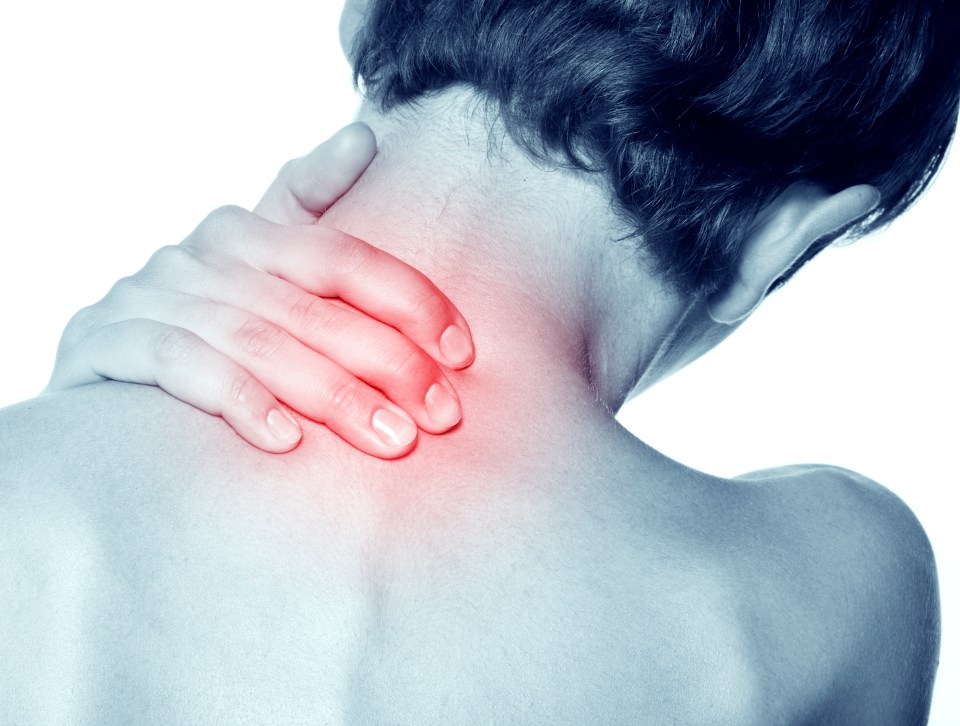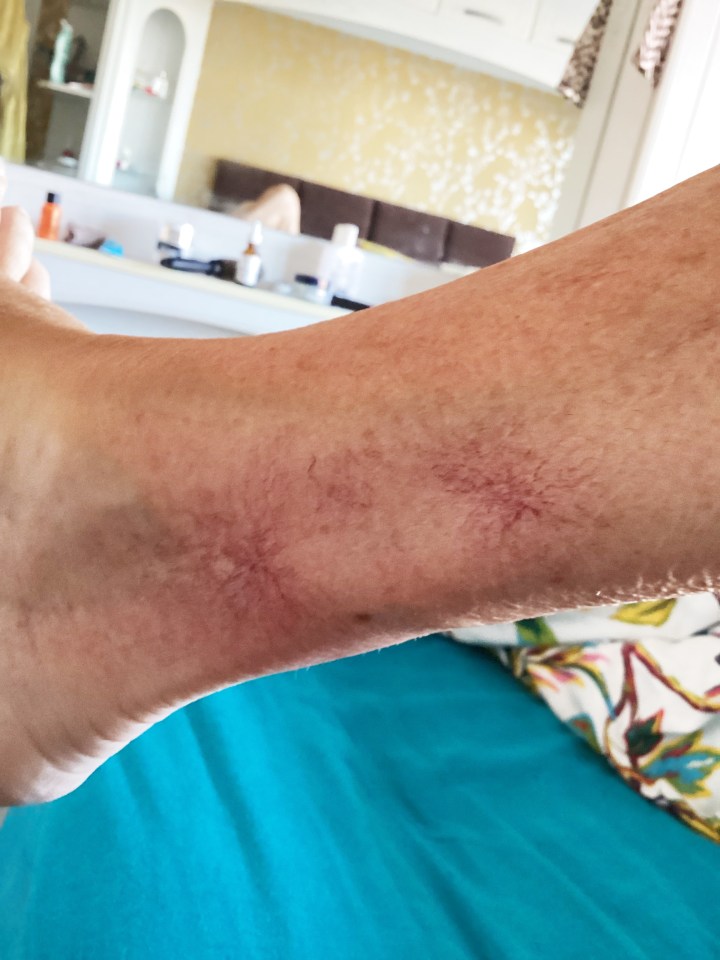A NEW virus is spreading that feels a little reminiscent of the Covid-19 pandemic.
Chikungunya is a mosquito-borne infection that can cause severe joint and muscle pain, headaches, sensitivity to light and skin rashes.
The UK Health and Security Agency reported 73 cases this year to June, a 100 per cent increase on 2024.
These were travellers returning from abroad (the mosquitos that spread the virus are not found in the UK).
Outbreaks have been reported in 16 countries, including China, France and Italy.
The last major one was 20 years ago, affecting 500,000 people.
Most people recover in a couple of weeks, but for some the joint and muscle pain can persist for years.
In rare cases, chikungunya is fatal.
UKHSA says check the Travel Health Pro Website before you go abroad for the latest advice on your destination.
Here’s a selection of what readers have asked this week.
So low over neck pain
Q: ABOUT three years ago, while playing snooker, I looked up to take a shot, when there was a big crack right at the base of my skull.
The pain was incredible and I now get pain whenever I look up.
My doctor suggested I might benefit from physio, but when the therapist massaged my neck, I got a sharp pain in a different area of it and I told her to stop.
Since then, I have a constant pain in the place she massaged.
It radiates down my neck, across my shoulder and down my left arm to my elbow.
The pain is unrelenting. The doctor said there was nothing they could do.
I feel abandoned and don’t know what to do.
A: That sounds incredibly distressing – both physically and emotionally – and it’s understandable you would feel abandoned when you’re living with constant pain and not getting clear answers or relief.
It sounds like there may have been an acute injury at the time, to a ligament, joint, disc, or nerve involvement, due to the “crack”.
Then, ongoing pain when looking up might indicate nerve compression or irritation in the cervical spine (neck).
The pain that radiates from the neck to the shoulder and arm would also fit with nerve root irritation or compression (possibly cervical radiculopathy).
Of course, I can’t diagnose you, but given your symptoms started with a traumatic event and are now persistent, radiating, and worsened by a prior intervention, I would push to make sure you’re referred for further assessment and likely imaging (X-rays, MRI scans, ultrasound).
Most hospitals have a “musculoskeletal (or MSK) service” which is often run by advanced practice physiotherapists.
They are highly skilled at assessing and managing musculoskeletal conditions, including ordering imaging and referring on to orthopaedics, rheumatology, neurology or pain clinics if needed.
The fact your symptoms worsened after physiotherapy means something may have been aggravated, and “nothing can be done” is not an acceptable answer when your quality of life is being severely affected.
If your pain changes suddenly – especially if you get weakness, numbness, trouble walking, or bladder/bowel changes – that’s a medical emergency and you should go to A&E immediately.
Tip of the week
GPs see neck, back and shoulder pain all the time.
Sometimes the fix is to adjust your sitting position, especially at a desk.
Sit back against your chair, with your feet flat on the ground.
Use a supportive cushion to fill the gap between your lower back and the chair if needed.
Q: l AM 69 and am very healthy, except l have been asthmatic all my life, though it has always been managed well.
After my last check-up at our asthma clinic, the nurse took my reliever inhaler (Ventolin) off my repeat prescription and said just to use the preventative (Fostair) when needed from now on.
Seems OK so far, but I wondered why this has happened.
Is it a money-saving exercise, do you think?
A: I am really glad that you have asked this as there is a lot of confusion regarding the recent changes to the asthma guidelines.
Firstly, what your nurse has done is correct and secondly, it is not a cost-saving exercise.
In fact, the Fostair inhalers cost more. The change is more about safety and aligning with modern best practice.
The only “cost-saving” aspect is indirect – preventing serious asthma attacks by keeping inflammation under better control.
For decades, the advice was to take your preventer every day and use your reliever (bronchodilator), which helps open up the airways, when you get symptoms.
But research showed that relying on the reliever alone for these episodes can increase the risk of sudden asthma attacks.
People who felt “fine” could still have ongoing airway inflammation, and frequent bronchodilator use was linked to worse long-term outcomes.
Your nurse has switched you to a “single inhaler maintenance and reliever therapy” (MART) plan.
It means Fostair is now doing both the jobs of your preventer and reliever.
Fostair contains beclometasone (steroid) and formoterol (long-acting but also quick-acting bronchodilator).
So you will use it daily for maintenance, and if you get asthma symptoms, you can use this same inhaler to get instant relief and anti-inflammatory treatment in one puff.
You can use Fostair “as needed” and it will work just like Ventolin to open up the airways, but also treat the inflammation immediately.
For people with mild, well-controlled asthma, this approach can reduce flare-ups and hospital visits.
If you’re using it more than two to three times a week as a reliever, it might mean your asthma isn’t as controlled as it could be, and it’s worth having an asthma review.
What’s causing unsightly leg veins?
Q: OVER the last few months, I have developed these unsightly spider-type veins in my right ankle.
The area they cover seems to be expanding. They are not painful, but I just wondered if you might know the cause and also if they are harmful.
I had a liver problem three years ago but I’m now OK. I take medication for slight portal hypertension.
A: Thank you for sending me this picture of your ankle, which shows small red blood vessels (capillaries) visible on the surface of the skin in a web-like pattern.
These could be one of two things – spider veins or spider naevi.
Spider veins (also called telangiectasias or thread veins) are small, dilated blood vessels that look like thin red, blue, or purple lines, often in a web-like pattern.
These are very common, usually appearing on the legs and sometimes the face.
Causes include increased venous pressure, valve weakness in veins, prolonged standing, hormonal changes, or sun damage. They are not dangerous.
Spider naevi (also called spider angiomas) can be distinguished by a central red dot (feeding arteriole) with thin radiating vessels like spider legs, which extend out from the centre.
The most common locations for these are the face, neck, upper chest, and hands, but they can also appear on the legs.
Doctors are more interested in these, because if there are three or more in adults, this can point to underlying liver problems or hormonal imbalance.
If I could examine you, I’d do a simple test to help differentiate between the two, because from the picture you have sent, and with your history of liver disease, yours really could be either.
The red spot of spider naevi with radiating blood vessels blanch (go pale) when pressure is applied (such as with a glass) and rapidly refill with blood from the centre of the spider outwards.
This distinct pattern is a key diagnostic feature.















